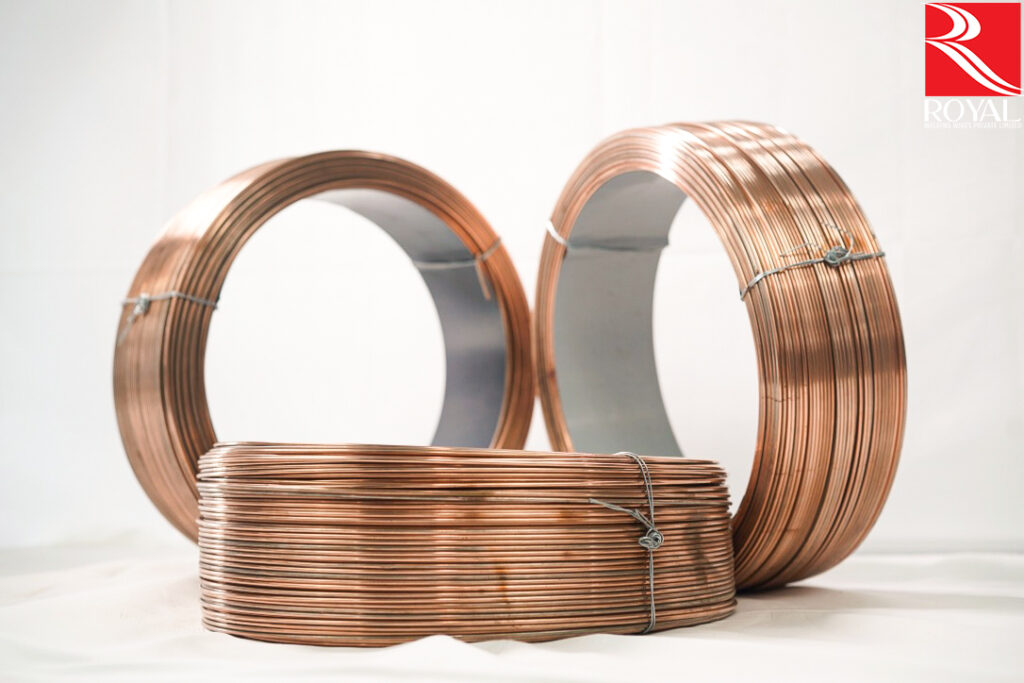Welding is an essential skill many people need to know to build or fix things. There are many different types of welding wire out there, and it can be hard to choose the right one for the job.
This article will help you choose the best welding wire for your needs.
Right Way to Choose Welding Wire for Your Project
When selecting welding wire, there are a few things to consider. The type of wire you use will affect the strength and heat resistance of the Weld.
Here are four tips for choosing the correct welding wire:
1. Choose Welding Wire Based on Your Project Needs
The type of project you are working on will dictate the type of welding wire you need. For example, soft metals, such as aluminum, need a more delicate welding wire, while hard metals, like steel, need a more rigid welding wire.
2. Consider the Temperature Rating of the Welding Wire
The temperature rating indicates how hot the wire can get before breaking down. The higher the number, the hotter the wire can get before it begins to melt or vaporize.
3. Check for Heat Resistant Attributes
Welding wires with these attributes are more resistant to heat and will last longer in high-heat applications. They may also be able to withstand higher temperatures without breaking down.
4. Compare Welding Wire Prices
Compare Welding Wire Prices per Gram/Length to Find Affordable OptionSome welding wires are more expensive per gram than others, but they may last longer if you use them in high-heat applications.
When comparing welding wire prices per length, factor in the cost of wire gauges and spools.
Say Goodbye to Welding Wire Confusion – Choose the Right Welding Wire for Your Project with Confidence!

Top Types of Welding Wire
When selecting welding wire, there are a few things to remember. The type of metal being welded, the size of the welds and the heat output required will determine what type of welding wire is best for the job. Here are some of the most common types of welding wire and their corresponding uses:
Welding Wire Types
Steels: Gas Tungsten Arc Welding (GTAW) requires a gas-shielded wire. This wire is used with a tungsten arc welder and has a higher heat output than other wires.
It is also less likely to cause discoloration or spatter on the surface of the metal being welded.
Lead-Free Steels: With lead-free electrodes, you no longer need a gas-shielded wire. This type of welding is typically used with an induction welder because it has a lower heat output and doesn’t require a gas supply.
Lead-free cables are also less likely to cause discoloration or spatter on the surface of the metal being welded.
Alloys: When welding alloys, you will need a combination of different types of welding wire. The most common types of alloys used in welding are stainless steel, aluminum, and brass. Each alloy requires a specific type of welding wire to achieve the best results.
What to Look for in Welding Wire
When looking for welding wire, there are a few things to consider. The type of wire, the diameter, and the gauge are all critical factors when choosing welding wire.
The type of Weld you will be using your wire for will determine which type of wire is best suited for that Weld.
For electric arc welder use: tungsten and molybdenum-coated cables are used with an alloy filler metal between the electrode and the workpiece.
The higher the temperature, the greater the penetration and strength of the Weld. This is why 18-gauge or 20-gauge wires are more commonly used in industrial settings than 14 or 16-gauge wires.
Welding wire diameter is measured in millimeters (mm). The wire you need will be based on your arc and flux electrode size.
Generally speaking, smaller diameter wires are used for small arcs, and larger diameter wires are used for larger angles. Gauge is measured in thousandths of an inch (thousandths of an inch or 0.0039 in.). The higher the gauge number, the thicker the wire.
Conclusion on How to Choose Welding Wire
Welding wire is a critical component of welding. When buying welding wire, it’s essential to consider the type of Weld you will be using it for, as well as the size and shape of the Weld.
In addition to considering the kind of Weld you will be using, it’s also essential to consider the welding wire’s diameter, gauge, and temper.
